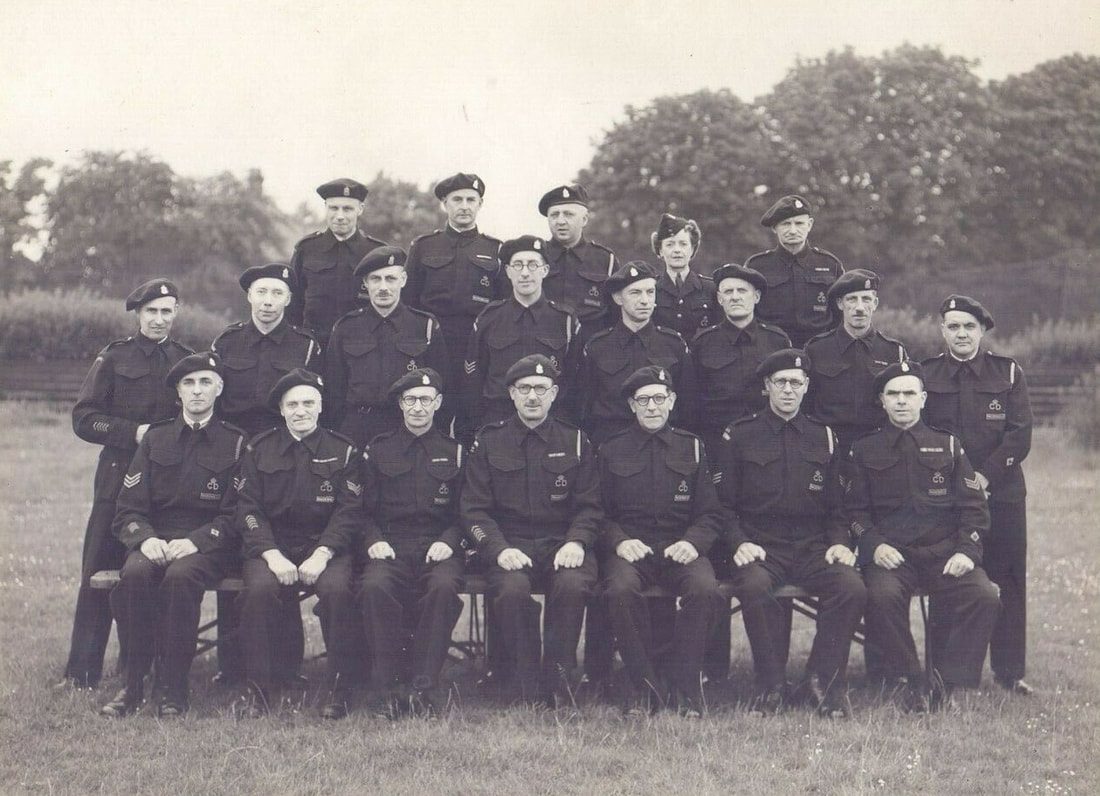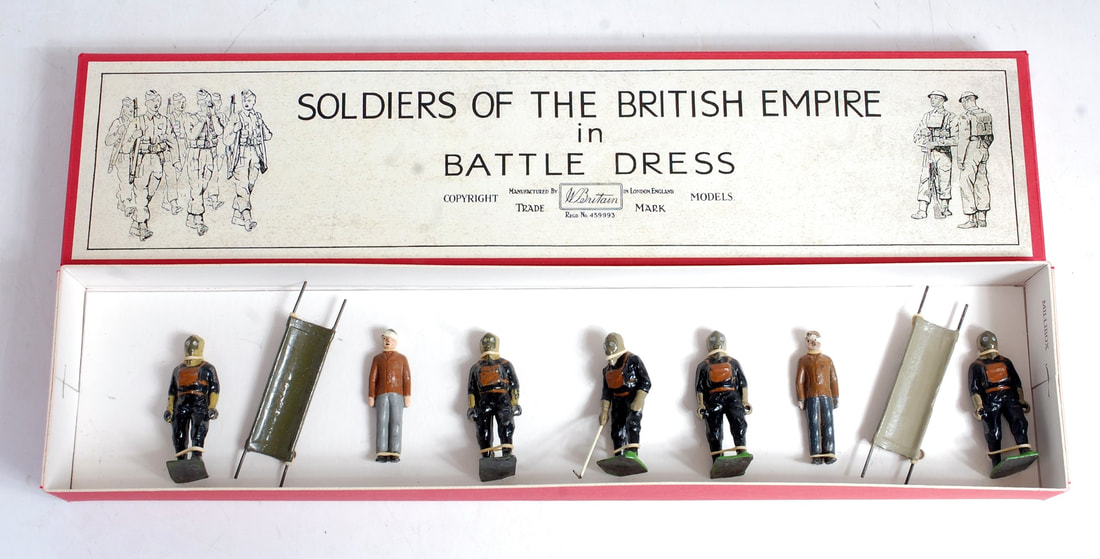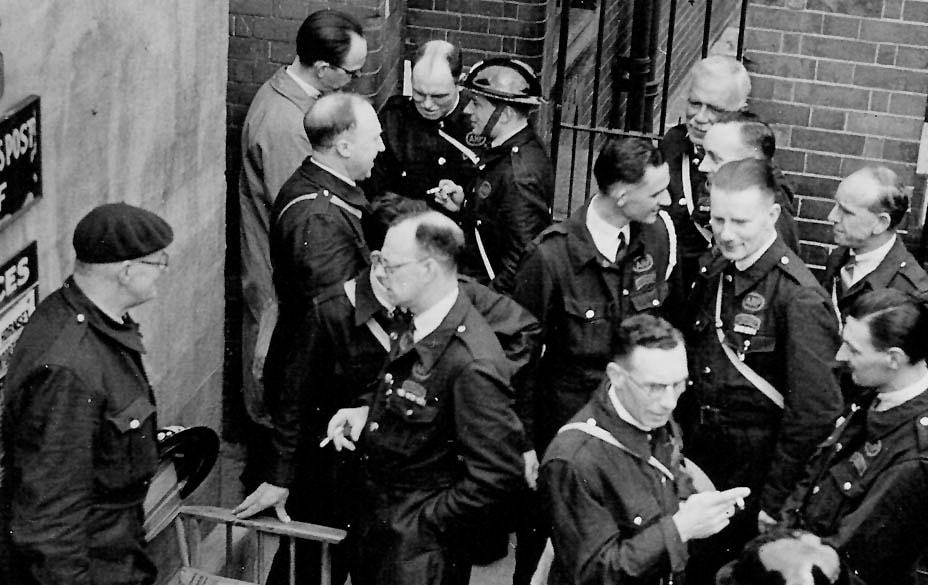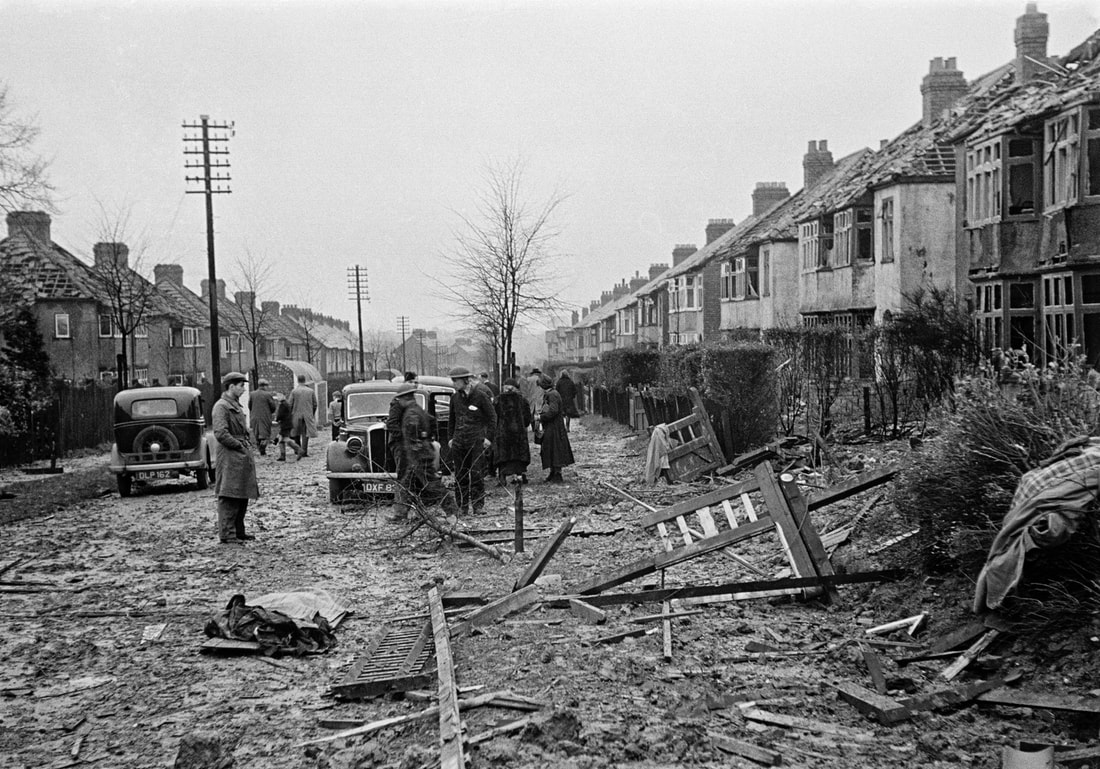|
This interesting photo shows wardens belonging to the Maidenhead area. Going by the number of war service chevrons the photo is probably a stand down photo following the dissolution of the Civil Defence services in May 1945. Of interest is a triangular badge on the left sleeves of a number of wardens. It is unknown at this time what this badge represents. At the back is a single lady warden wearing a private purchase side cap.
Photo is currently available on eBay.
0 Comments
With the end of hostilities in Europe in Mat 1945 the Civil Defence Services were stood down. A large number of stand down photos were taken as mementos for those that served. This photo shows a large group belonging to a Rescue Squad from Essex.
Currently up for auction on saleroom.com are these figures of an ARP Gas Detection Squad. Produced in the late 1930s it is one of a series of ARP studies sold by William Britain. The box is a replica.
A group of wardens photographed relaxing off duty. Given that the wardens are all wearing bluette overalls and none are wearing battledress the photo is probably pre-summer 1941.
Photo from Harringay Online Community. George Rodger (19 March 1908 – 24 July 1995) was a British photojournalist noted for his work wartime photos of the blizes on Coventry and London as well as other home front studies. He later entered Bergen-Belsen concentration camp with the British Army and documented what he found there. A selection of his home front photos can be found on a site dedicated to his photos.
Photo copyright George Rodger |
Please support this website's running costs and keep it advert free
Categories
All
Archives
June 2024
|
|
|
Copyright © 2018–2024
|





 RSS Feed
RSS Feed